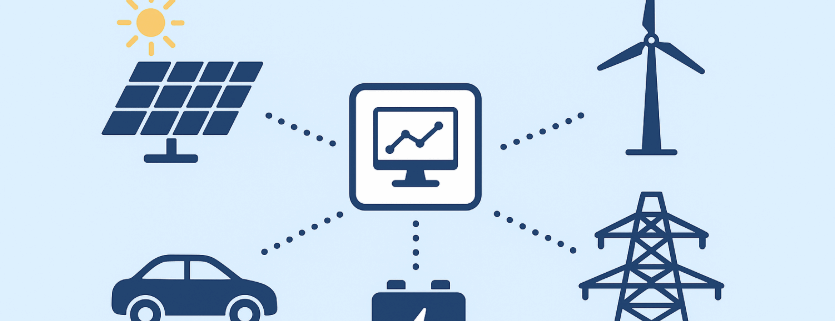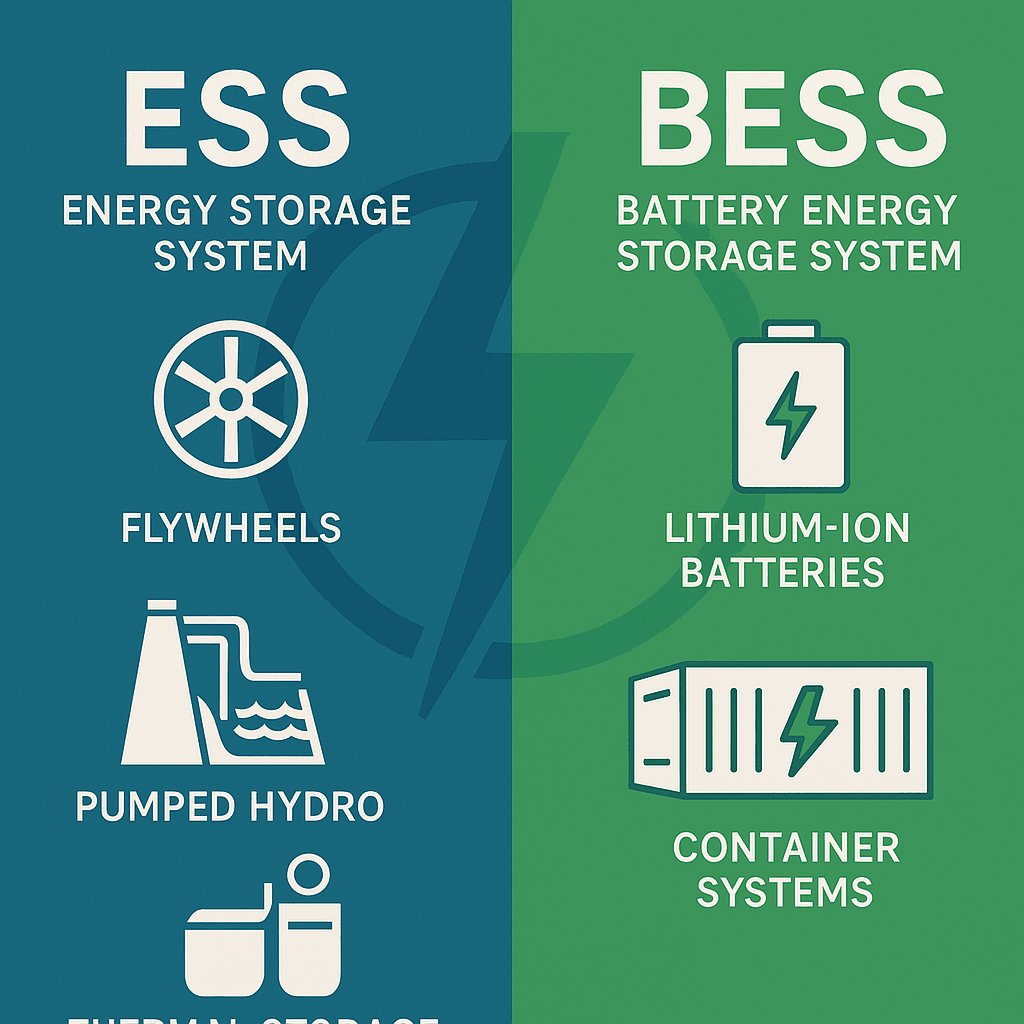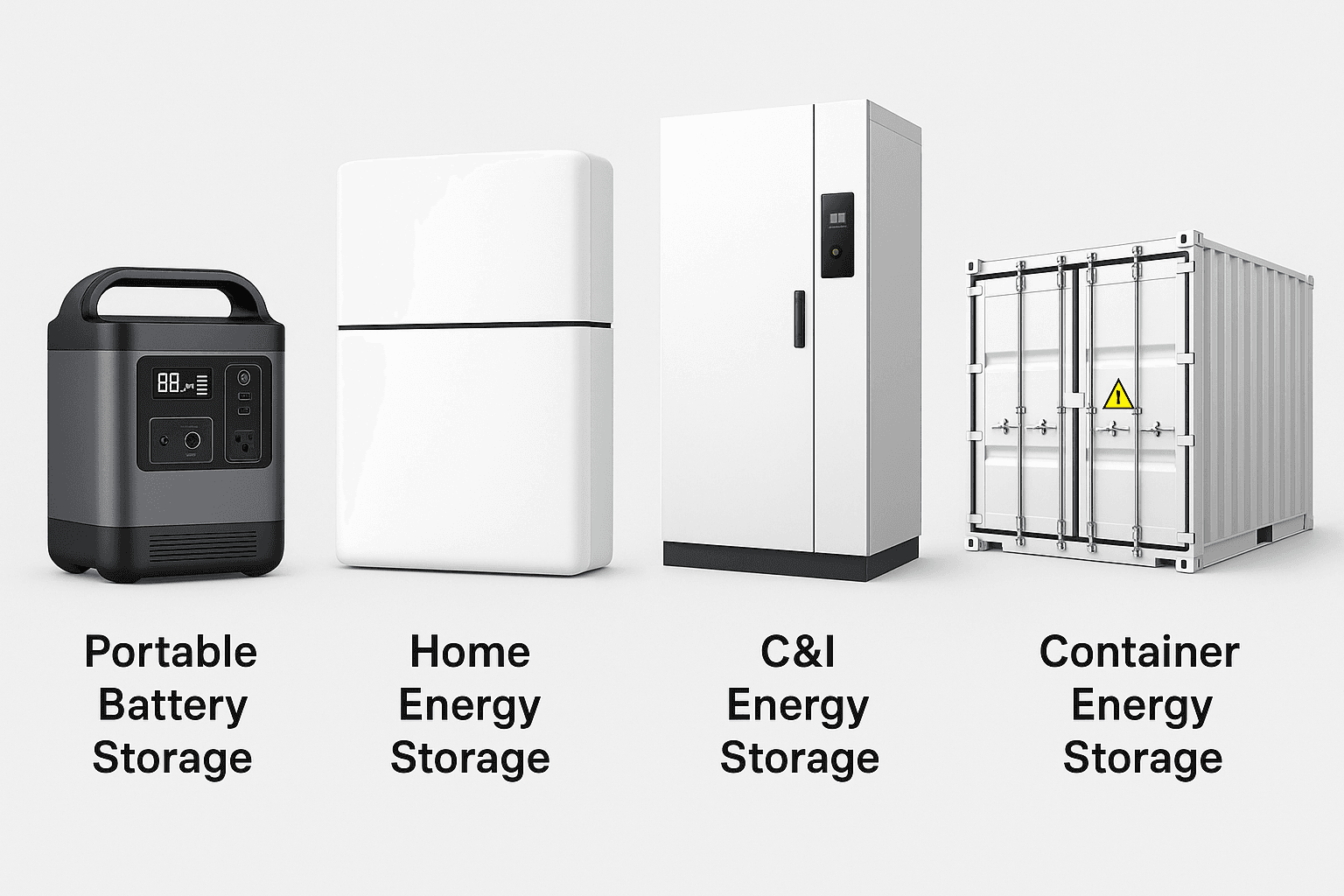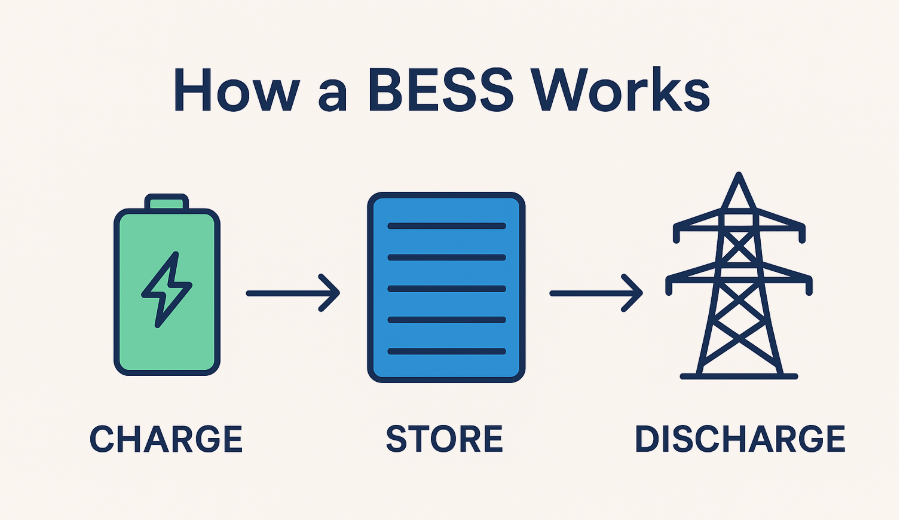What is Energy Storage Systems? Types of Energy Storage Systems
Introduction: The Growing Importance of Energy Storage Systems
Renewable energy is transforming the way we generate power, but sources like solar and wind are variable by nature. To make them reliable, we need Energy Storage Systems (ESS) that capture energy when it’s abundant and release it when demand is high.
At Sunlith Energy, we focus on Battery Energy Storage Systems (BESS) and advanced technologies that ensure stability, cost efficiency, and resilience across commercial, industrial, and utility sectors.
What is an Energy Storage System?
An Energy Storage System (ESS) stores energy for later use, bridging the gap between production and consumption. ESS plays a vital role in:
- Balancing supply and demand
- Reducing grid instability
- Enhancing renewable energy integration
- Lowering energy costs for businesses and communities
- Providing emergency backup power
👉 If you’re considering storage solutions for your business, explore our C&I BESS applications to see how energy storage delivers long-term value.
Types of Energy Storage Systems
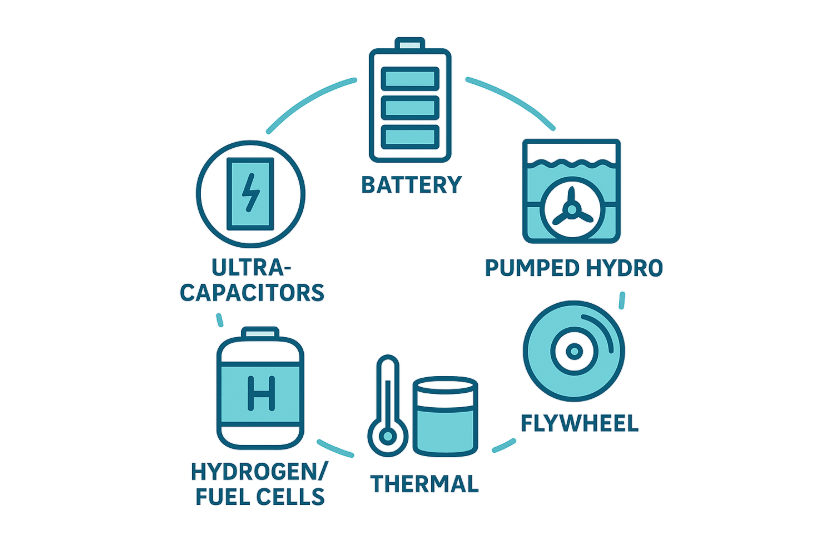
There are several types of ESS, each with unique strengths, technologies, and applications. Let’s look at them in detail:
1. Battery Energy Storage Systems (BESS)
Battery Energy Storage Systems are the most common type of ESS, offering high efficiency and scalability.
- Lithium-ion batteries – Industry standard; compact, efficient, and widely used in renewable energy storage and electric vehicles.
- Lead-acid batteries – Affordable but lower cycle life, used in smaller-scale applications.
- Flow batteries – Store energy in liquid electrolytes, ideal for long-duration storage.
👉 Learn the difference between BESS and ESS to understand their unique roles.
2. Mechanical Energy Storage
Mechanical systems store energy using physical movement or potential energy.
- Pumped Hydro Storage (PHS) – Uses water pumped uphill and released to generate electricity; highly mature technology.
- Compressed Air Energy Storage (CAES) – Stores compressed air in underground caverns and releases it to drive turbines.
- Flywheels – Store kinetic energy in a spinning rotor, providing instant power and rapid response.
3. Thermal Energy Storage Systems
Thermal ESS captures and stores energy in the form of heat or cold.
- Molten Salt – Stores solar heat for electricity generation even after sunset.
- Ice Storage – Produces and stores ice during off-peak hours for cooling buildings.
- Phase Change Materials (PCMs) – Absorb or release heat during phase transitions, providing stable temperature control.
4. Hydrogen and Power-to-X Storage
Hydrogen is a promising long-duration storage solution.
- Electrolysis converts renewable electricity into hydrogen.
- Hydrogen can be stored and later used in fuel cells, combustion turbines, or converted into synthetic fuels.
- Enables sector coupling (electricity, heating, mobility).
5. Fuel Cells
Fuel cells are not traditional storage devices, but they play a key role in energy conversion.
- They use hydrogen or other fuels to produce electricity through electrochemical reactions.
- Highly efficient and scalable for backup, mobility, and grid support.
- When paired with hydrogen storage, they form a clean and reliable energy cycle.
6. Ultra-Capacitors (Supercapacitors)
Ultra-capacitors store energy electrostatically rather than chemically, unlike batteries.
- Provide fast charging and discharging cycles.
- Best for short bursts of high power (e.g., voltage stabilization, regenerative braking).
- Typically used as a complement to batteries, not a replacement.
7. Emerging & Hybrid Energy Storage Systems
Modern ESS solutions are increasingly hybrid, combining different technologies to optimize performance. For example:
- Battery + Ultra-capacitor systems for both long-duration storage and fast response.
- Thermal + hydrogen storage for flexible renewable integration.
👉 At Sunlith Energy, we design storage systems that meet diverse needs while complying with UL Certifications and global safety standards.
Choosing the Right Energy Storage Systems
When selecting an ESS, key factors include:
- Application (backup, renewable integration, grid stability)
- Storage duration (short vs. long)
- Technology maturity & cost
- Safety and compliance standards
For commercial and industrial BESS, safety is critical. That’s why standards like UL 9540, CE and IEC certifications are vital benchmarks.
Conclusion
Energy Storage Systems are the foundation of a reliable, renewable-powered future. From batteries and mechanical systems to hydrogen, fuel cells, and ultra-capacitors, each technology has unique strengths.
At Sunlith Energy, we help industries, businesses, and utilities choose the right storage solution to maximize efficiency, lower costs, and ensure sustainability.
👉 Learn more about our Battery Energy Storage Systems and discover how we are powering the clean energy revolution.
Frequently Asked Questions (FAQ) on Energy Storage Systems
1. What is an Energy Storage System (ESS)?
An Energy Storage System (ESS) stores energy produced at one time and makes it available later when needed. It helps balance supply and demand, improves renewable energy reliability, and supports grid stability.
2. What are the main types of Energy Storage Systems?
The main types of ESS include:
Ultra-capacitors – Provide rapid charging and discharging for short-term power needs
Battery Energy Storage Systems (BESS) – Lithium-ion, lead-acid, and flow batteries
Mechanical Storage – Pumped hydro, flywheels, and compressed air
Thermal Storage – Molten salt, ice, and phase change materials
Hydrogen Storage – Converts renewable energy into hydrogen for later use
Fuel Cells – Convert hydrogen into electricity through electrochemical reactions
3. What is the difference between ESS and BESS?
ESS (Energy Storage System) is a broad term covering all types of energy storage technologies.
BESS (Battery Energy Storage System) is a specific type of ESS that uses batteries to store and release electricity.
👉 Read more: BESS vs ESS.
4. Why are Energy Storage Systems important for renewable energy?
Renewables like solar and wind are intermittent. ESS ensures that energy is stored when generation is high (e.g., sunny or windy periods) and released when demand increases, making renewable power more reliable.
5. What is the best energy storage system for commercial and industrial (C&I) use?
For most C&I applications, Battery Energy Storage Systems (BESS) are the best choice due to:
- High efficiency
- Fast response time
- Flexible scalability
- Proven reliability
👉 Learn more about C&I BESS solutions.
6. Are Energy Storage Systems safe?
Yes, modern ESS are designed with strict safety measures. Compliance with standards like CE, UL 9540 and IEC certifications ensures that systems meet global safety and performance requirements.
7. What is the future of Energy Storage Systems?
The future of ESS includes advanced solid-state batteries, wider adoption of hydrogen storage, and hybrid systems combining batteries, fuel cells, and ultra-capacitors to deliver long-duration, cost-efficient, and safe energy storage.


